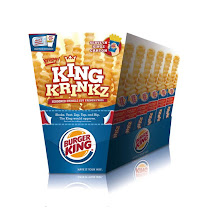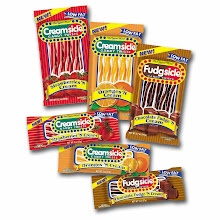
Working in the food business sometimes feels I'm part of the MOD Squad.
As in "Merchants of Death"?
As in smoking, drinking and firearms?
The MOD Squad was satirized in the movie "Thank You For Smoking." It took some laughs from the way that cigarette companies, distillers and the NRA work the Washington lobbyists and Congress to avoid regulation, water-down bills that might hurt business, and the cynicism that has all sides putting money ahead of the public good.
Some critics of the food and restaurant industry are starting to make the connection in the public's mind between cigarettes, obesity and cheap food. Of course, mechanized farming has resulted in a paradox: an unprecedented abundance at cheap prices, as well as an epidemic of obesity and the pollution of the land. This article in Time magazine is a very succinct summary of the conundrum of the modern food channel, as well as an occasionally simplistic look at solutions to the problems it identifies.
The article is quite hard-hitting, even for the post-Bush wimpy mainstream media that always looks to balance every article with contrary views. It starts by showing the reader just how cheap food is, adjusted for inflation:
According to the USDA, Americans spend less than 10% of their incomes on food, down from 18% in 1966. Those savings begin with the remarkable success of one crop: corn. Corn is king on the American farm, with production passing 12 billion bu. annually, up from 4 billion bu. as recently as 1970. When we eat a cheeseburger, a Chicken McNugget, or drink soda, we're eating the corn that grows on vast, monocrop fields in Midwestern states like Iowa.
We eat corn, use corn oil margarine as a substitute for butter, corn oil for cooking, corn syrup to sweeten our prepared beverages (to the point that Snapple and Pepsi recently made a splash by offering limited time versions sweetened with cane sugar). Yes in order to produce that corn (which is also diverted to making cheap gas with ethanol), we use enormous quantities of chemical fertilizer (ironically made from the same imported oil the ethanol is supposed to replace). That means a very large and troubling carbon footprint.
Because it's a monocrop, corn is particularly susceptible to pests. In conventional agriculture, farmers plant crops in rotation and often as barriers to insects so they don't have to use as much pesticide. Marigolds, for example, deter many plant-eating bugs, and a ring of them can drive off some invaders. But not with vast fields on an industrial scale. The traditional farmer accepts that some corn worms will be in his freshly-picked ears; the modern grocery shopper will likely refuse to buy any ear of corn with a bug on it.
Single crop plantings are also more subject to pathogens (anyone of Irish descent understands how catastrophic a blight or other disease can be). And don't think the Potato Famine is as relevant to today as the Black Death in the Middle Ages: the same fungus that wiped out Ireland's monocrop (potatoes) in the late 19th Century is ruining the tomato crop this year. So corn must be treated with a variety of pesticides and fungicides. There is quite a bit of disagreement whether these measures leave dangerous residues.
I stopped buying anything but organic potatoes when I read how most farmers grow a separate crop for their families that isn't treated with chemicals.
The corn crop is changing, too. Large conglomerates like Monsanto are pushing for the adoption of genetically-modified corn (GMO) and wheat that will be pest- and pathogen-resistant. Unfortunately, we don't know how changing the corn genome will affect non-GMO plants. Several European countries are banning or limiting GMO agricultural products. Snack chips made with GMO corn, for example, can't be imported.
The bad news about cheap food is that it not only isn't really cheap, it's not cheap across the board. Corn farmers enjoy subsidies, and ethanol has made corn more expensive (good for farmers, bad for food companies and consumers). Yet subsidies are applied unequally, largely depending on political clout:
A study in the American Journal of Clinical Nutrition found that a dollar could buy 1,200 calories of potato chips or 875 calories of soda but just 250 calories of vegetables or 170 calories of fresh fruit. With the backing of the government, farmers are producing more calories — some 500 more per person per day since the 1970s — but too many are unhealthy calories. Given that, it's no surprise we're so fat; it simply costs too much to be thin.
Food companies don't like to take any responsibility for the obesity epidemic. They point out that no one is holding a gun to your head when you scarf that Big Mac or down those cookies. But poor people and those less-educated don't have the same choices, which is reflected in the fact that obesity is more of a problem with the poor- and not just because they can't afford Pilates.
The solutions advocated by the article (buy local, buy organic) are good in their own way, but don't address the problems of food costs to the consumer in a time of economic struggle. The drop in same-store sales at Whole Foods shows that consumers are less-likely to pay the prices required for organic food when times are tough. And given the struggles of organics, the near future doesn't look like a time when Americans will face up to the real cost of their cheap food.
Excerpted from BSLG's weekly subscription news reader service Food Business News. To subscribe or for information about licensing, contact Broad Street Licensing Group (tel. 973-655-0598)
.gif)











No comments:
Post a Comment
Note: Only a member of this blog may post a comment.